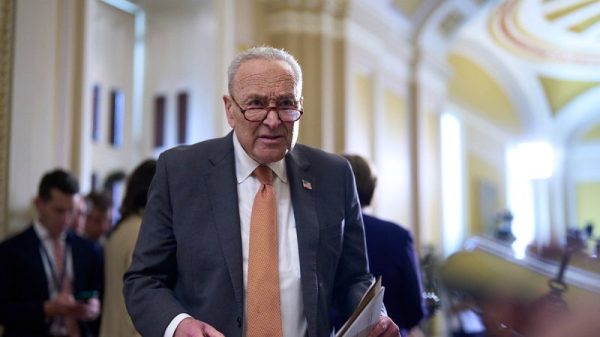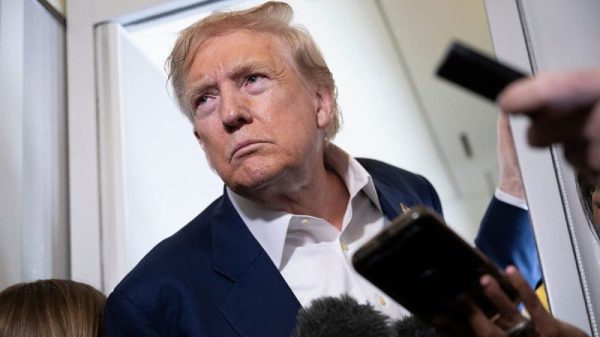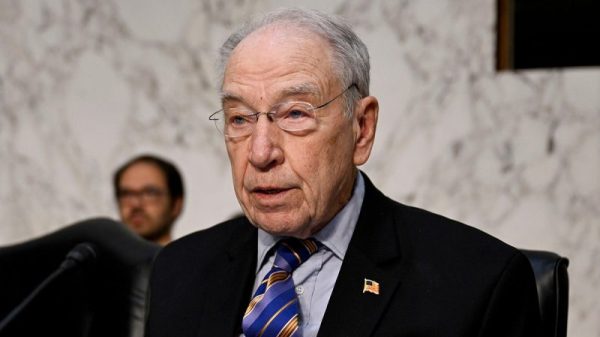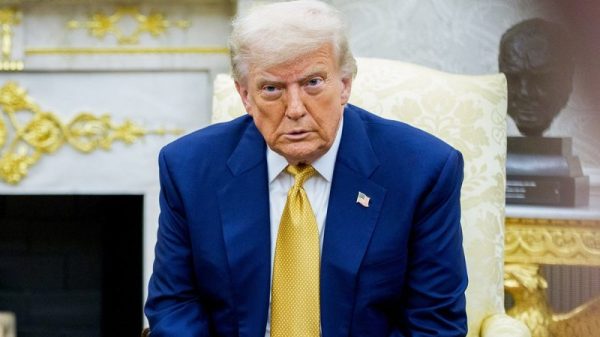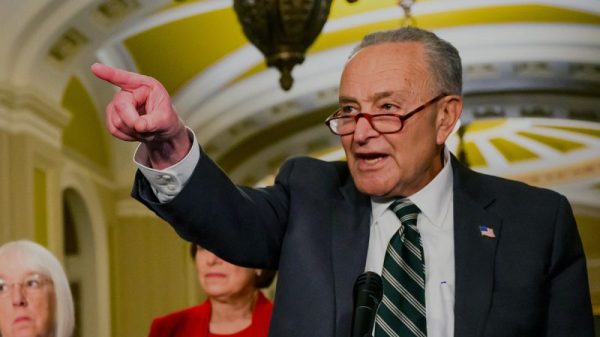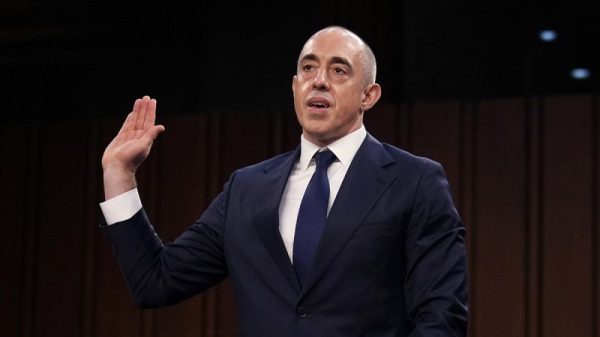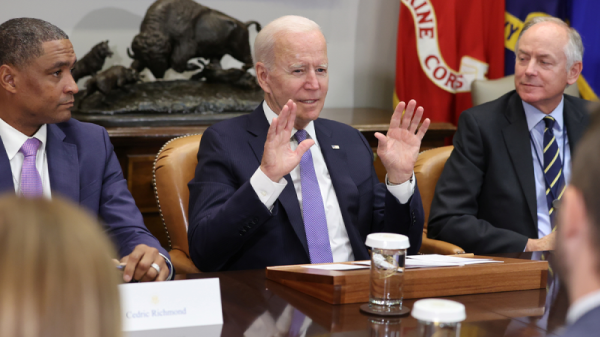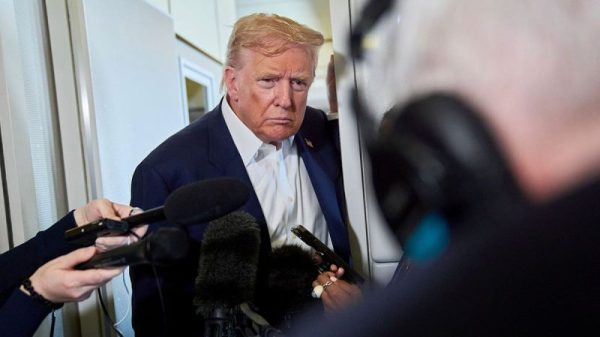Since the Iowa caucuses ended Monday night, there’s been a lot of energy spent on interpreting the results in a way that best reflect the interpreters’ desires. Florida Gov. Ron DeSantis took to the stage that evening to crow about having “punched his ticket” out of Iowa — meaning that his distant second-place finish wasn’t distant enough that he wasn’t going to stop asking people to donate money to his doomed campaign. Former U.N. ambassador Nikki Haley, for her part, announced that her slightly more distant third place proved that the nominating contest was down to her and former president Donald Trump. Sure, why not?
On the left, meanwhile, there was some astonishment that Trump’s victory could be treated as significant given that he received fewer than 57,000 votes in a state that is not representative of the United States on the whole. What’s more, nearly half of Iowa caucus-goers backed someone other than Trump, suggesting more weakness than was represented in coverage after the caucuses.
Those bits of data aren’t incorrect, but the interpretation is — even more so than Haley’s hyperoptimistic presentation of the race.
Let’s begin with that assessment of how few votes Trump received. Again, it’s true that he earned 56,520 votes (as of writing) in a contest that has been hailed as a robust victory for the former president. It is true, too, that Trump’s victory margin was the largest in the history of the caucuses.
The Iowa caucuses are a weird, low-turnout event even in the best years. It’s not just voting but showing up and sitting there and hearing speeches, counting pieces of paper and so on. That makes it harder for many Iowans to participate. Over the past three contested Republican caucuses — in 2012, 2016 and 2024 — the vote totals represented 20 percent, 31 percent and 19 percent of active Republican voters in the state, respectively.
Those three contests occurred with a roughly equivalently sized pool of active Republicans in the state. But there are also three notable differences between the 2012 and 2016 caucuses and this year’s.
The weather was far warmer in the previous two (26º daily average in Des Moines in 2012, 36º in 2016 and -7º this year). Second, the previous two contests had more candidates from whom caucus-goers could select. And third, Trump came in with a much bigger lead in the polls.
The weather has received a lot of blame for the low turnout, but research from a team at Iowa State University noted days before the caucuses that enthusiasm was down relative to the Democratic caucuses in 2020. The second two points unquestionably contributed to that; with Trump having a demonstrably big lead and fewer alternatives available, there was less reason for people — especially Trump voters — to drag themselves out on a cold January night.
The result? Landing more than half of the vote in the caucuses this year meant getting north of 55,000. Trump did.
The broader argument, about Iowa’s size and representativeness, walks a well-trodden path. Iowa is not very populous. Nor is New Hampshire. Combined, they constitute about 1 percent of the U.S. population.
This is a common complaint about the primary process. Why do these low-population states get to set the tone for selecting a party’s presidential nomination? The easiest answer is: because they do and because they work very, very hard to ensure that they do.
But the “nonrepresentative part” of this complaint lands far better in Democratic than Republican primaries. In 2020, Joe Biden’s nomination came despite his poor performances in Iowa and New Hampshire; it was when the process got to the more populous — and more heavily non-White — South Carolina that his path forward was secured. (The non-representativeness of the early contests was an obvious factor in Biden’s push for South Carolina to move up on the Democratic primary calendar.) For the GOP, which is much more heavily White, this is far less of an issue.
No one should argue that winning Iowa has actual electoral value for either party. Because it is a small state, it awards relatively few delegates. Republicans need more than 1,100 to secure the nomination; Trump landed 20 of the state’s 40 available. So he earned less than 2 percent of what he needs. Instead, Iowa offers a real-world test of candidates’ organizational strength … which informs confidence among supporters … which can reshape the field. Entrepreneur Vivek Ramaswamy spent a lot of time and money running in Iowa and came in fourth. Afterward, he dropped out. No one would believe he could still earn the nomination.
This brings us to the idea that Trump’s earning 51 percent of the vote suggests that 49 percent of Iowa caucus-goers want another candidate. That is not a fair assumption to make.
A lot of those caucus-goers who voted for someone other than Trump probably had him as their second choice. Data from YouGov, provided to The Washington Post, indicates that more than half of Republicans and Republican-leaning independents who planned to vote for DeSantis had Trump as their second pick. Even among Haley voters, a fifth said Trump was their second pick in this poll from the week before the caucuses.
Let’s use those percentages for the caucus vote and allocate, say, 75 percent of Ramaswamy’s support to Trump. (Because Ramaswamy gets so little support in polls, it’s hard to come up with a meaningful breakdown of second choices.) Apply those national percentages to the second-, third- and fourth-place candidates and we can estimate that two-thirds of caucus-goers offered some support to the former president, even excluding Ramaswamy supporters.
That mirrors data from the final poll conducted by Selzer & Co. for the Des Moines Register and NBC News. Seven in 10 Republicans and Republican-leaning independents viewed Trump favorably, compared with about 6 in 10 who said the same of DeSantis and about half who viewed Haley or Ramaswamy positively. Iowa Republicans like Trump!
Which is also reflected in the entrance poll data. Two-thirds of caucus-goers said they don’t think Biden’s 2020 win was legitimate — a key measure of fealty to Trump’s worldview. A similar percentage said that a criminal conviction of Trump wouldn’t prompt them to think that he was unfit for the presidency.
We should also note that the caucuses’ totals include non-Republican participants. In fact, the Selzer poll found that about half of those who said they planned to back Haley were independents (4 in 10) or Democrats (1 in 10), who could re-register as Republicans to participate. Some of those Democrats or independents, or perhaps a lot, were participating to block Trump’s path forward.
So we come back to the throughline here. Yes, Trump’s big victory Monday was a function of fewer than 57,000 votes. But it was more than half of the votes cast in a low-turnout contest — with turnout likely down in part because his lead was so big. It is also out of a pool of voters that included some hard-to-measure number of non-Republicans trying to influence the outcome and many others who liked Trump while supporting someone else.
To look at the results in Iowa as a demonstration of Trump’s purported weakness is simply denial — denial perhaps as robust as DeSantis’s and Haley’s effort to spin their losses as victories.











